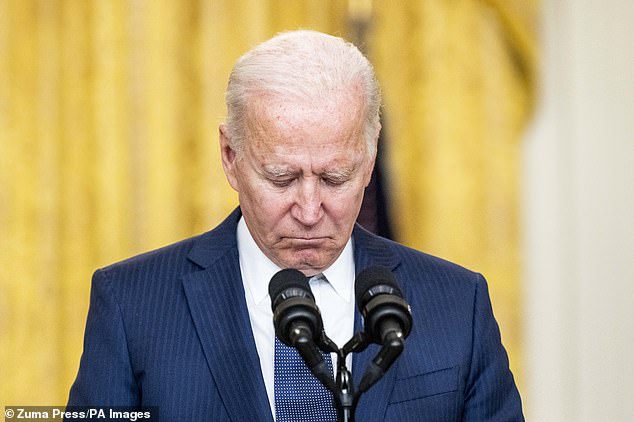Less than 72 hours before the first debate of the United States presidential elections, Joe Biden’s White House is reeling.
On Sunday, Chairman of the Joint Chiefs of Staff Gen. Charles Q. Brown made the extraordinary claim that the United States will not protect Israel in a war with Hezbollah terrorists in Lebanon.
“The United States is unlikely to be able to help Israel defend itself against a broader Hezbollah war, as it helped Israel fight off an Iranian missile and drone bombardment,” Brown told reporters.
On Monday, U.S. officials were backtracking, reportedly issuing a rare warning through intermediaries to the Iran-backed terrorist group.
Two US officials told Politico that Hezbollah cannot count on the United States to prevent Israel from launching an attack on Lebanese soil. The officials said the terrorists “must understand that Washington will help Israel defend itself” against any counteraggression.
Fairly reasonable. After all, we don’t negotiate with terrorists.
President Biden in Washington, August 2021.
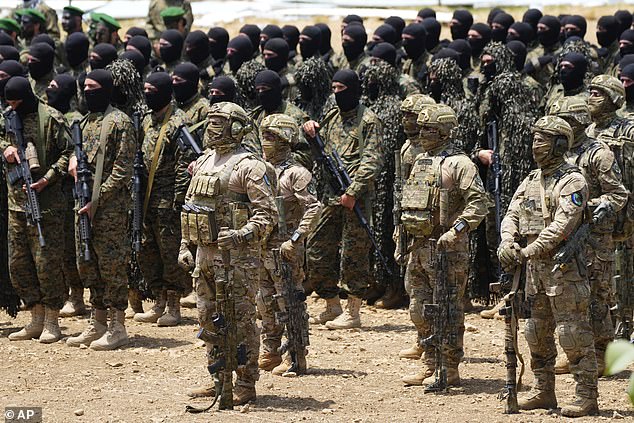
Hezbollah training exercises in southern Lebanon on May 21, 2023.
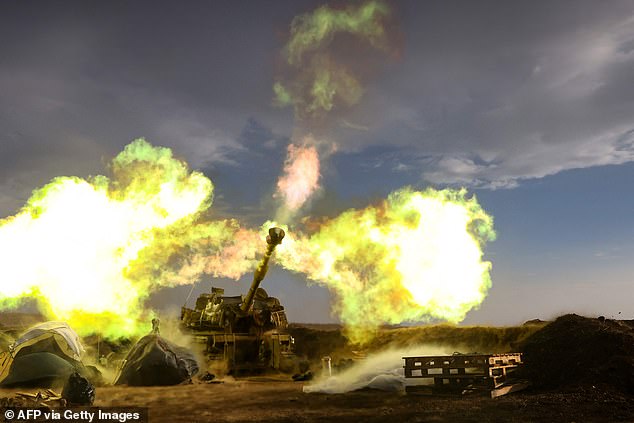
An Israeli artillery unit fires during a military drill near the Lebanese border on November 2, 2023.
But the clumsiness of bureaucracy is unforgivable. This is not the time for the White House to send mixed signals.
This week, Israeli Prime Minister Benjamin Netanyahu said in an interview that his defense forces will soon end the “intensive” phase of their offensive in Gaza and intensify operations in the north of the country, on the border with Lebanon. .
For seven months, Hezbollah terrorists have launched thousands of rockets and missiles into communities in northern Israel, forcing some 60,000 residents to evacuate.
Meanwhile, new reports suggest that Tehran’s mullahs are sending more weapons directly to Lebanon on flights from Iran to fuel their terrorist power.
Hezbollah is now equipped with thousands of high-tech drones and mortars, and an arsenal of more than 200,000 additional rockets and missiles.
That’s ten times the ammunition Hezbollah had during its last major war with Israel in 2006.
Shiite Muslim extremists also have an army of at least 20,000 men, although some experts say the actual number could be five times higher if reservists are included.
By contrast, Hamas was thought to have fewer than 25,000 fighters at the start of its war with Israel.
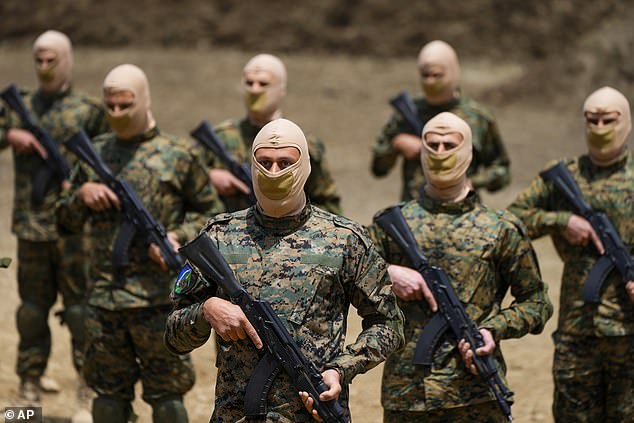
Hezbollah conducted a training exercise in southern Lebanon last May.
So make no mistake: The Middle East is now closer to an all-out regional war than it was when Israel exchanged direct attacks with Iran in the months following the October 7 Hamas terrorist attacks.
And if this powder keg prepared on the border with Lebanon explodes, it will make the current conflict in Gaza look like a walk in the park.
War with Hezbollah would cause thousands of both Israeli and Lebanese casualties.
Iran is likely to intervene, firing its missiles and drones directly at Israel, as it did in April.
The Islamic Republic would also have the power to unleash its other terrorist proxies from Iraq, Syria, Yemen and the West Bank against Israel.
Despite its enviable ‘Iron Dome’ technology, Israel does not have enough air defenses to defend all of its borders simultaneously.
And with so much activity in the skies, key energy, military and transportation sites would likely take priority over, say, civilian communities.
If left defenseless, Israelis across the country would be forced to spend months in shelters while their cities and towns were attacked daily.
Much of Lebanon – its communities much richer and better developed than the crumbling cities and towns of Gaza – would be completely destroyed.
The IDF would likely raze neighborhoods, search for Hezbollah’s huge weapons caches, and drive out terrorist foot soldiers hiding among civilians.
A confrontation had been brewing for some time.
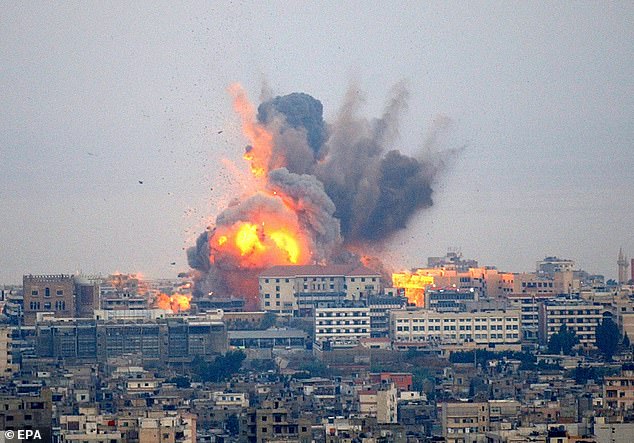
Israeli attacks in Beirut, Lebanon, in the midst of the 2006 war.
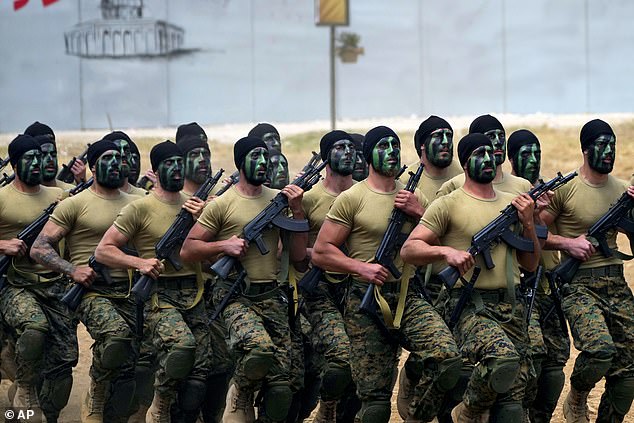
Hezbollah fighters in 2023.
In September 2004, the United Nations passed a resolution demanding the “disbandment and disarmament of all Lebanese and non-Lebanese militias,” as part of its call for the national government to exercise control over all armed groups within its territory.
Then, in August 2006, following a war precipitated by Hezbollah against Israel, the UN pathetically reiterated that “there will be no weapons (in Lebanon) without the consent of the Government of Lebanon and no authority other than that of the Government of Lebanon.” Lebanon.’
But nearly two decades later, Hezbollah’s horde has become the equivalent of a medium-sized European army.
Indeed, even though there are some 10,000 UN peacekeepers from 49 countries lining the Israel-Lebanon border, Hezbollah is more emboldened than ever.
Because? Because neither UN forces nor the Lebanese Armed Forces (LAF), backed by $2.5 billion in US security assistance since 2006, will risk a confrontation with this Iran-backed proxy.
But after waiting twenty years for the international community to fulfill its resolutions demanding the disarmament of Hezbollah, Israel may not be able to wait any longer.
As Iran rallies its regional proxies in Lebanon, Syria, Iraq and Yemen to implement its ultimate goal of eliminating the Jewish state, Israel is quickly reaching a point where it has no choice but to fight for its survival.
Mark Dubowitz is the executive director of the Foundation for the Defense of Democracies. In 2019 he was sanctioned for Iran for his defense.

